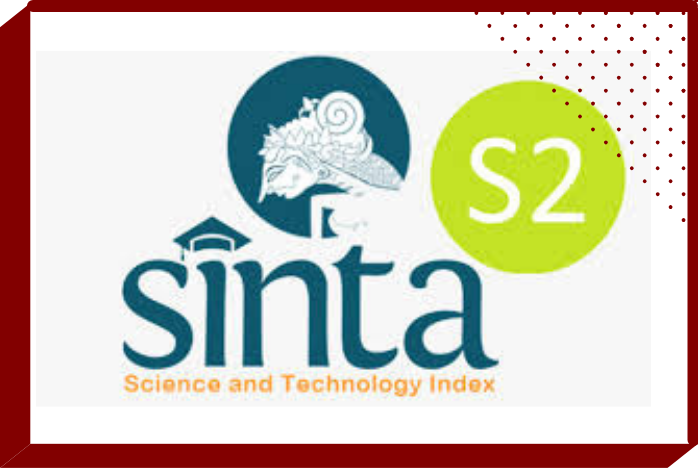Mitos dan Pelestarian Alam: Eksplorasi Ekologi dalam Cerita Rakyat Sumber Taman Sari di Madura, Indonesia
 Abstract views: 161
,
Abstract views: 161
,
 PDF downloads: 133
PDF downloads: 133
Abstract
This study aims to analyze the ecological dimensions in the folklore of Sumber Taman Sari in Madura. This research employs a multidisciplinary approach, combining ecocriticism, cultural studies, environmental ethics, and folkloristics, using Lévi-Strauss' structuralism theory. Data was collected through interviews with local community leaders and field observations at the Sumber Taman Sari site. Data collection techniques included recording, note-taking, and photography. The analysis involved separating data based on the structural elements of the folklore and interpreting the ecological dimensions contained within. The findings reveal that the water source in the story is regarded as a symbol of purity and ecological balance. Prohibitions on the use of natural resources, such as trees and animals around the water source, reflect the community's efforts to maintain ecosystem balance. Moreover, annual rituals performed at the water source reinforce the spiritual relationship between humans and nature. The folklore functions as a medium of conservation and the dissemination of local wisdom.
Downloads
References
Arianto, T., & Simanjuntak, D. S. (2020). Representation of Ecocriticism in the Folklore of Mak Ungkai Spirit. Studies in English Language and Education, 7(2), 576-591.
Dorson, R. M. (2011). Folklor in the Modern World. Walter de Gruyter.
Endraswara, S. (2018). Antropologi Sastra Lisan: Perspektif, Teori, dan Praktik Pengkajian. Jakarta: Yayasan Pustaka Obor Indonesia.
Gabdullaziyanova, G. I., Mugtasimova, G. R., Nurmukhametova, R. S., & Smagulova, G. N. (2019). Metaphor as a Representation of Tatar Culture in Children Folklore. Revista Turismo Estudos e Práticas-RTEP/UERN, (1), 1-6.
Harrington, R., Anton, C., Dawson, T.P., de Bello, F., Feld, C.K., Haslett, J.R., Kluvánkova-Oravská, T., Kontogianni, A., Lavorel, S., Luck, G.W. and Rounsevell, M.D. (2010). Ecosystem Services and Biodiversity Conservation: Concepts and a Glossary. Biodiversity and Conservation, 19, 2773-2790.
Hutomo, S.S. (1991). Mutiara Yang Terlupakan. Surabaya: HISKI.
Ivey, B. (2011). Values and Value in Folklore (AFS Presidential Plenary Address, 2007). The Journal of American Folklore, 124(491), 06-18.
Janthaluck, M., & Ounjit, W. (2012). Folklore, Restoration of Social Capital and Community Culture. Procedia-Social and Behavioral Sciences, 65, 218-224.
Kapchan, D. (2021). The Aesthetics of Proximity and the Ethics of Empathy.
Layton, R. (2005). “Folklor and World View.” In Archaeology and Folklor. Routledge.
Leach, E. R. (1976). Culture and Communication: The Logic by which Symbols are Connected. An Introduction to the Use of Structuralist Analysis in Social Anthropology. Cambridge University Press.
Lévi-Strauss, C. (1963). Réponses à Quelques Questions. Esprit (1940), 322(11), 628-653.
Lévi-Strauss, C. (2021). Structural Anthropology Zero. John Wiley & Sons.
Rendtorff, J. D. (2014). French Philosophy and Social Theory. A Perspective for Ethics and Philosophy of Management. Dortrecht: Springer.
Sims, M., & Stephens, M. (2011). Living Folklore: An Introduction to the Study of People and Their Traditions. University Press of Colorado.
Spradley, J. P. (1979). The Ethnographic Interview. Holt, Rinehart, and Winston.
Sudikan, S. Y. (2002). Metode Penelitian Sastra Lisan. Surabaya: Citra Wacana Press.
Sukmawan, S., & Setyowati, L. (2017). Environmental Messages as Found in Indonesian Folklore and its Relation to Foreign Language Classroom. Arab World English Journal (AWEJ), 8.
Wafi, A. (2024). Wawancara Cerita Rakyat Sumber Air Taman Sari, Waru, Pamekasan. 2 Juni 2024.
Copyright (c) 2024 GHANCARAN: Jurnal Pendidikan Bahasa dan Sastra Indonesia

This work is licensed under a Creative Commons Attribution-ShareAlike 4.0 International License.
Ghancaran: Jurnal Pendidikan Bahasa dan Sastra Indonesia uses an Open Access Policy under the Creative Commons Attribution-ShareAlike 4.0 International License. Authors publishing in this journal agree to the following terms:
- Ghancaran Journal holds the copyright and grants the journal rights for first publication with the work simultaneously licensed under a

The work is distributed under Creative Commons Attribution-ShareAlike 4.0 International License which allows others to share, copy, and redistribute the material in any media or format and adapt, remix, change, and develop the material even for commercial purposes, as long as it is stated credit and license derivative works under similar terms. - Authors may make additional contractual arrangements for non-exclusive distribution of the journal's published work version.
- Authors are permitted to post their work online (e.g., in institutional repositories or on their websites) before and during submission, as doing so may lead to productive exchange.


















